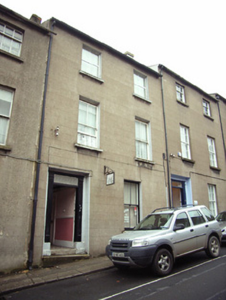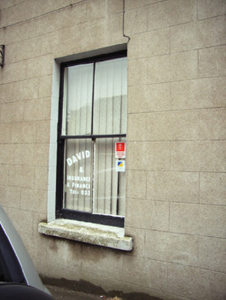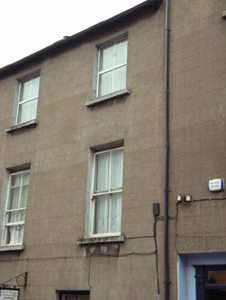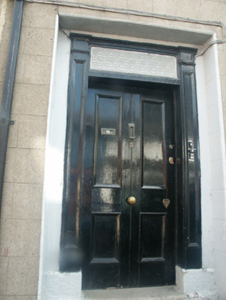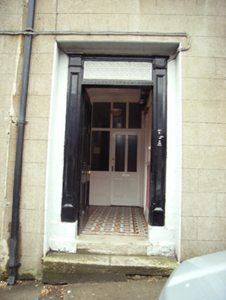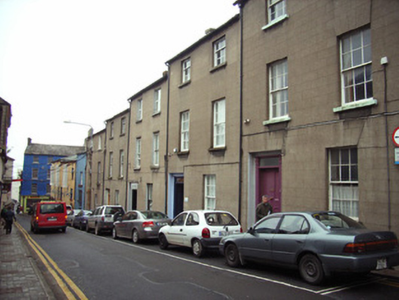Survey Data
Reg No
15503106
Rating
Regional
Categories of Special Interest
Architectural
Original Use
House
In Use As
Office
Date
1830 - 1840
Coordinates
304837, 121849
Date Recorded
16/06/2005
Date Updated
--/--/--
Description
Terraced two-bay three-storey house, between 1830-40, possibly over basement. Refenestrated, c.1925. Part refenestrated, post-1996. Now in use as offices. One of a group of six. Pitched slate roof with clay ridge tiles, rendered (shared) chimney stacks over red brick construction having stepped capping supporting terracotta pots, and cast-iron rainwater goods on rendered eaves having iron ties. Rendered, ruled and lined walls with slate hanging to rear (south) elevation. Square-headed window openings with cut-granite sills, and replacement two-over-two timber sash windows, c.1925, having replacement uPVC casement windows, post-1996, to top floor (replacing three-over-six timber sash windows). Square-headed door opening in square-headed recess with two cut-granite steps, timber panelled (hollow) pilaster doorcase on cut-granite padstones, and timber panelled door having overlight (leading through hall having decorative clay-tiled floor to square-headed internal door opening with glazed timber panelled door having sidelight on panelled riser, and overlight). Interior with timber panelled shutters to window openings. Street fronted with concrete footpath to front [VO/SS].
Appraisal
A well composed house of the middle size built by the Rowe family of Ballycross House as one of a group of six identical units (with 15503104 - 105, 107 - 109) making a positive contribution to the streetscape aesthetic of Rowe Street Lower with attributes identifying a sophisticated design programme including the vertical emphasis of the massing contributing to a stepped roofline corresponding with or following the incline or slope in the street, the diminishing in scale of the openings on each floor producing a graduated visual effect, the understated surface articulation focused on a Classically-detailed doorcase displaying good quality carpentry, and so on. Having been well maintained, the house continues to express an early aspect with the elementary composition surviving in place together with most of the historic fabric, both to the exterior and to the interior: however, the continued replacement of the historic fabric threatens to undermine the contribution made by the house to the character of the collective ensemble in the street scene.

